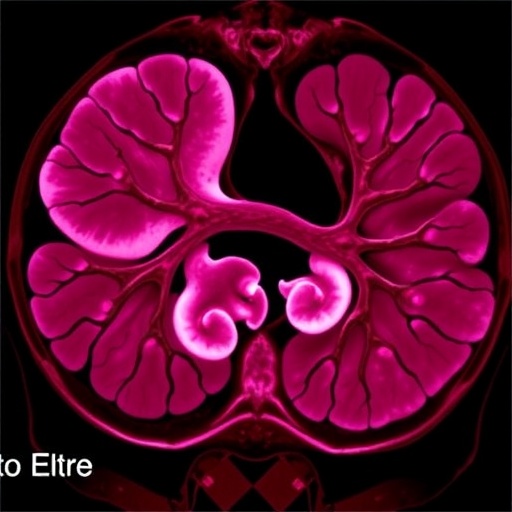Recent advances in the realm of immunotherapy have highlighted the importance of improving T cell activation strategies to enhance therapeutic efficacy against various diseases, particularly cancer. A novel approach detailed in a breakthrough protocol focuses on the manufacturing of synthetic viscoelastic antigen-presenting cells (APCs). These innovative constructs are meticulously designed to emulate the essential properties of natural APCs, thereby offering a substantial advancement in targeted therapeutic applications. The implications of this research hold promise for elevating the standard of immunotherapeutic interventions, providing new avenues for treatment strategies.
The crux of this research lies in the preparation and functionalization of synthetic APCs, which are engineered as cell-sized sodium alginate microbeads. These microbeads showcase remarkable versatility with regard to their tunable stiffness and viscoelasticity, attributes that are critically important for closely mimicking the physical behavior of living cells. By incorporating a high-throughput microfluidic system, researchers can fabricate these microbeads with precision, ensuring that each synthetic APC possesses consistent characteristics that are indispensable for effective T cell activation.
One of the pioneering elements of this protocol is the integration of a unique crosslinking strategy to achieve desirable mechanical properties in the synthetic microbeads. By carefully controlling the crosslinking process, the researchers can dictate the viscoelasticity of the resulting beads. This feature has significant implications, as the mechanical environment of T cells can drastically affect their activation and proliferation. By optimizing these properties, the synthetic APCs are not only capable of mimicking the natural APCs but are also tuned for optimal interaction with T cells.
Surface functionalization is another critical aspect of the protocol. Through innovative click chemistry techniques, the researchers systematically attach various activation molecules to the microbead surfaces. This step is pivotal because the binding of these molecules can drastically influence T cell responses. The ability to customize the surface chemistry of the synthetic APCs provides researchers with the tools to enhance T cell activation, allowing for tailored immunotherapeutic strategies that can be fine-tuned to meet specific clinical needs.
Characterization methods that assess both the mechanical and biochemical properties are integral to ensuring the synthetic APCs function as intended. The research underscores the importance of rigorous quality assessment, citing multiple techniques that are employed to evaluate the performance of the synthetic cells. Understanding how these APCs behave in diverse conditions provides insights into their potential effectiveness and helps to refine the fabrication process further.
Unlike traditional matrices or rigid microbeads, these synthetic APCs allow researchers to exert precise control over their mechanical and biochemical features. This tailored approach significantly enhances the potential for robust T cell activation, enabling better responses in cellular immunotherapies. Enhanced activation of CD8+ and CD4+ T cells, along with optimally promoting the formation of T memory stem cells (TMSCs), showcases the adaptability and benefits of using synthetic APCs in clinical settings.
The findings of this research also indicate a marked improvement in chimeric antigen receptor (CAR) transduction efficiency when employing these synthetic cells. The implications extend beyond mere T cell activation, suggesting a holistic enhancement of T cell functionality that could drive superior tumor-killing efficacy both in vitro and in vivo. The capacity for these synthetic APCs to support robust T cell expansion represents a significant stride towards more effective immunotherapies.
An added advantage of this synthetic approach is the ease with which these microbeads can be removed after their intended use. By utilizing simple centrifugation or calcium chelation methods, researchers can efficiently detach the synthetic APCs from activated T cells. This step is critical because it preserves the functionality of the activated T cells, optimizing their performance when reintroduced into a therapeutic context. Such a feature is vital for maintaining the integrity and potency of the therapeutic cells, ultimately benefiting patient outcomes.
Moreover, the flexibility inherent in the design of synthetic APCs signifies that this technology can extend beyond current applications in cancer therapy. The methodology adopted in this research allows for adaptations that could address various fields within immune cell engineering. The potential expansion of this platform bodes well for its application in treating autoimmune disorders, infectious diseases, and other conditions where precise immune modulation is necessary.
This comprehensive protocol, spanning approximately one week for completion, encompasses every aspect of synthetic APC preparation—from fabrication to functionalization and quality assessment. Researchers embarking on this journey should possess foundational knowledge in microfluidics, handling of biomaterials, bioconjugation techniques, and basic cell culture practices. The expectations for user expertise highlight the sophisticated nature of this cutting-edge technology while showcasing the diverse skill set required for its successful implementation in research settings.
The global interest in enhancing immunotherapeutic strategies has never been more pronounced, and this innovative synthetic APC protocol stands at the forefront of this endeavor. The rich interconnection of engineering and immunology embodied in this research offers fertile ground for future discoveries, guiding the next generation of therapeutic advancements. As the scientific community seeks to refine and implement such strategies, the efficacy of synthetic APCs may redefine standards of care for immunotherapy.
The exploration of synthetic viscoelastic antigen-presenting cells represents a significant leap forward not just in methodology but also in the potential clinical applications that can stem from this research. As more studies build upon these findings, the horizon looks promising for novel immunotherapeutic solutions aimed at combating diseases with greater precision and efficacy. The journey of translating these findings into widespread clinical practice will inevitably shape the future of immunotherapy.
In conclusion, the integration of advanced engineering techniques with immunological principles exemplified in the development of synthetic APCs illustrates a paradigm shift in cellular immunotherapy. As work continues to refine these methodologies and understand their full potential, the implications for patient care and treatment outcomes could be transformative, enhancing the therapeutic landscape for a myriad of health challenges across the globe.
Subject of Research: Synthetic viscoelastic antigen-presenting cells for T cell activation and immunotherapy.
Article Title: Manufacturing synthetic viscoelastic antigen-presenting cells for immunotherapy.
Article References:
Liu, Z., Li, YR., Yang, Y. et al. Manufacturing synthetic viscoelastic antigen-presenting cells for immunotherapy.
Nat Protoc (2025). https://doi.org/10.1038/s41596-025-01265-2
Image Credits: AI Generated
DOI: 10.1038/s41596-025-01265-2
Keywords: synthetic antigen-presenting cells, T cell activation, immunotherapy, viscoelasticity, click chemistry, microfluidics, tumor immunology.
Tags: cancer immunotherapy researchcancer treatment innovationscrosslinking strategies in biomaterialsengineered cell-sized microbeadshigh-throughput microfluidic systemsimmunotherapy advancementsmechanical properties of synthetic APCssynthetic antigen-presenting cellsT cell activation strategiestargeted therapeutic applicationstherapeutic efficacy improvementsviscoelastic microbeads





